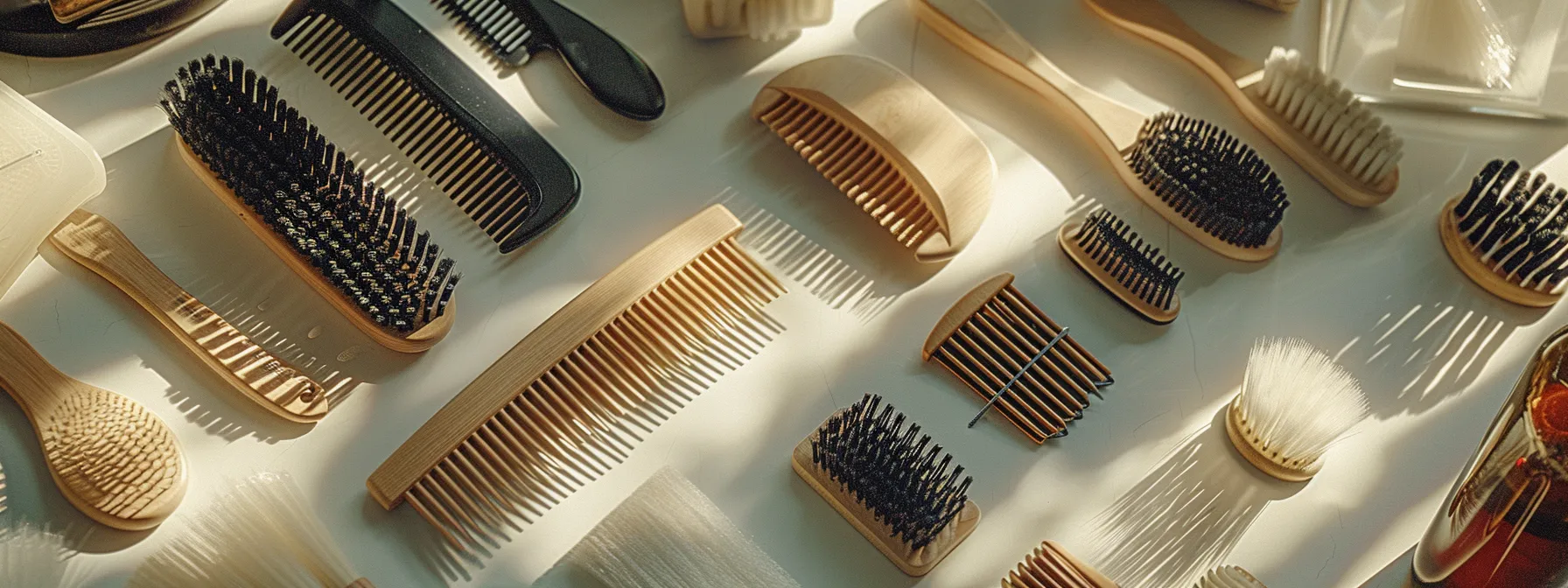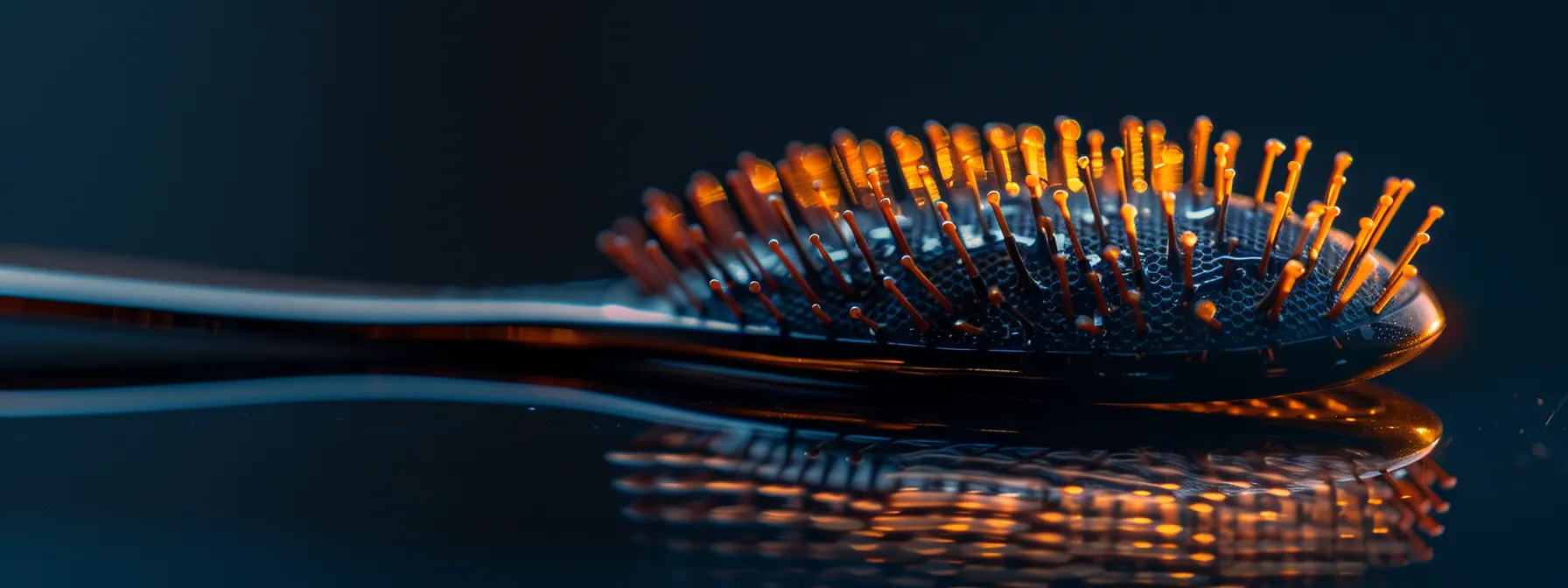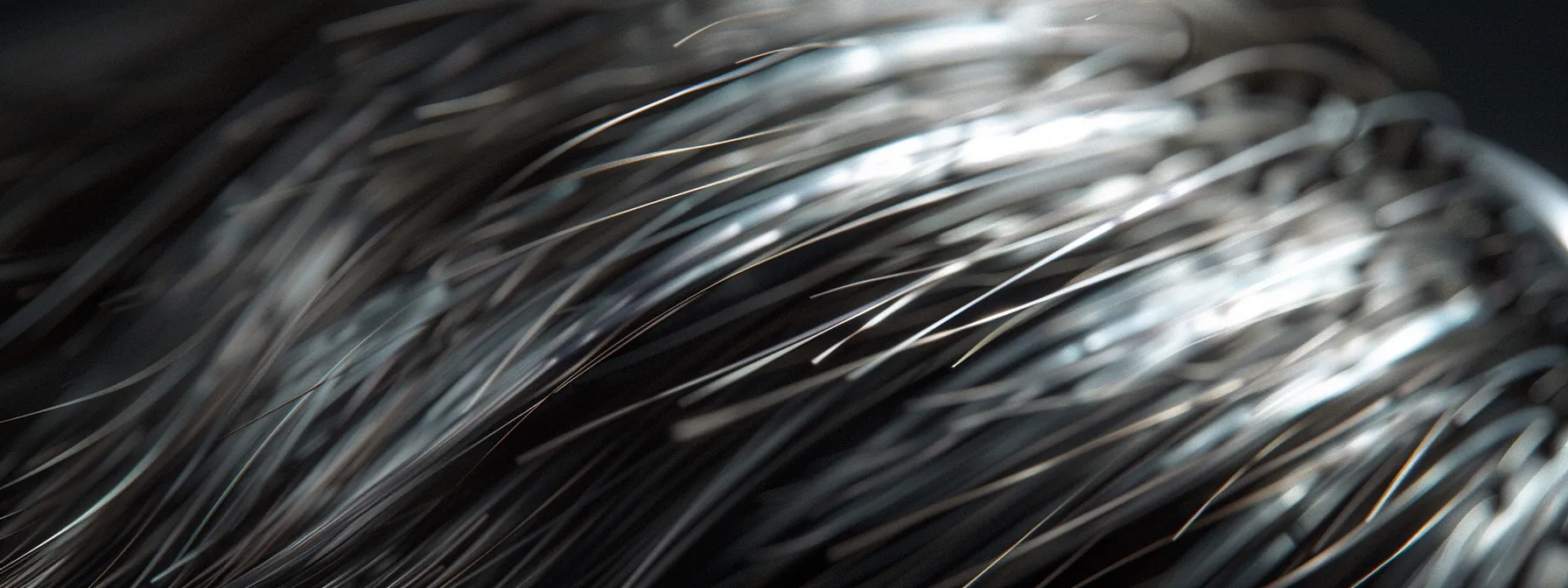Best Brushes for Long Hair
Finding the right brush can make all the difference. This guide will explore the best brushes for long hair, focusing on types that prevent breakage and reduce tangles. You’ll learn how to choose a brush that suits your hair type and proper brushing techniques to keep your hair healthy. Whether you’re dealing with hair loss or just want to maintain your shag or bun, we’ll help you find the perfect tool to keep your hair looking their best.
Key Takeaways
- Choose brushes based on your hair type and length for optimal care and styling
- Regular brushing distributes natural oils and prevents tangles in long hair
- Clean and store brushes properly to maintain their effectiveness and longevity
- Use gentle detangling techniques to prevent breakage and damage to long hair
- Invest in quality brushes suited for different purposes to maintain healthy long hair
Understanding the Specific Needs of Long Hair
Long hair presents unique challenges that require specific care. Understanding these needs is crucial for maintaining healthy, beautiful hair. The right brush plays a vital role in hair health and appearance. Your hair’s length significantly influences brush selection, impacting how you care for your cosmetology-approved style. Let’s explore how to choose the best brushes for your long hair care routine.
Challenges Unique to Long Hair Maintenance
Long hair presents unique challenges that require special attention. You might struggle with tangling, especially when styling your hair in a ponytail or letting it fall in a curtain-like shape. Maintaining the health of your scalp can also be tricky, as long hair can trap moisture and lead to conditions like seborrheic dermatitis. To keep your hair looking its best, you’ll need to choose the right brushes and develop a tailored care routine that addresses these specific issues.
The Role of the Right Brush in Hair Health
Your choice of brush plays a crucial role in maintaining the health of your hair. The right brush can help you manage frizz, detangle knots, and even distribute natural oils from your scalp to the ends of your hair. When you visit your local salon, the stylist might recommend specific brushes to complement your hair type and styling routine. Whether you’re looking to create curls, maintain a perm, or apply a hair mask, using the appropriate brush can make a significant difference in your hair’s overall health and appearance.
How Hair Length Influences Brush Selection
Your hair length greatly impacts the type of brush you’ll need for optimal care. For long hair, you’ll want brushes with longer bristles to reach from root to tip, ensuring an even distribution of natural oils and moisture. Wide-barrel brushes work well for creating volume and smooth styles while detangling brushes with flexible bristles help prevent breakage when working through knots. If you color your hair, consider brushes with softer bristles to minimize damage and preserve your shade. Remember, proper brushing techniques combined with the right shampoo can help maintain the health and vibrancy of your hair.
Long hair demands special care. Now, let’s explore the tools that make it shine.
Exploring Types of Brushes Suitable for Long Hair

When managing long hair, choosing the right brush is essential. You’ll find paddle brushes great for smooth detangling, while boar bristle brushes add shine. Round brushes help with styling and volume, and wide-tooth combs offer gentle care. For efficient drying with your hair dryer, try vented brushes. Whether you’re styling bangs, creating a braid, or maintaining silver hair, these tools will help you achieve your desired look while protecting your hair from heat damage.
Paddle Brushes for Smooth Detangling
Paddle brushes are your best friend for smooth detangling. These brushes are designed with a flat, wide surface that covers more area, making them ideal for straightening and detangling your hair. The best hair brush for fine long hair often features a mix of nylon and boar bristles, which helps distribute natural oils from root to tip, enhancing your hair’s health and dimension. If you have an ombré style, a paddle brush can help blend the colors seamlessly while preventing breakage. Here’s a quick guide to choosing the right paddle brush:
Boar Bristle Brushes for Added Shine
Boar bristle brushes are a game-changer when it comes to adding shine and maintaining scalp health. These brushes work wonders by distributing your scalp’s natural oils from root to tip, giving your hair a healthy glow. If you’re dealing with thick long hair, opt for a boar bristle brush with widely spaced bristles to tackle knots without causing damage. As you brush from the crown down, you’ll notice how these brushes contribute to your overall skincare routine by gently exfoliating your scalp and promoting circulation.
Round Brushes for Styling and Volume
Round brushes are your go-to tools for creating volume and shaping various hairstyles. Whether you’re aiming for a sleek mullet or voluminous dreadlocks, the right round brush can help you achieve your desired look. These brushes come in different sizes, allowing you to work with various hair lengths and create different curl patterns. As you blow-dry your hair, use a round brush to lift the roots, adding body and movement. Remember to apply a small amount of oil to protect your hair from heat damage and enhance its natural shine.
Wide-Tooth Combs for Gentle Care
Wide-tooth combs are essential for gentle care, especially after hair coloring or when wearing a wig. These combs help prevent breakage and minimize damage to your hair, making them ideal for use on wet hair or when applying hair spray. You can even use a wide-tooth comb to distribute products evenly through your hair before styling with a flat iron. Remember to be extra gentle when combing through damp hair to avoid unnecessary stress on your strands.
Vented Brushes for Efficient Drying
When drying your hair, vented brushes can be your best friend. These brushes have holes in the base that allow air to flow through, speeding up drying time and reducing heat damage. You’ll find them particularly useful for creating volume at the roots or smoothing out your ends. Pair a vented brush with your favorite blow dryer for efficient styling, especially after using a deep conditioner or hair mask.
Choosing the Best Brush for Your Long Hair

Choosing the right brush starts with understanding your hair type and texture. You’ll want to match brush materials to your hair’s needs, select the right shape and size, and consider handle design for comfort. Let’s explore how to find the perfect brush.
Assessing Your Hair Type and Texture
To choose the best brush, you need to assess your hair type and texture first. Run your fingers through your hair to feel its thickness and observe how it behaves. Is it fine and prone to tangles, or thick and resistant to styling? Notice if your hair is straight, wavy, or curly, as this affects how it interacts with different brush types. Understanding these characteristics will help you select a brush that caters to your specific needs, ensuring gentle detangling and effective styling for your long hair.
Matching Brush Materials to Hair Needs
When choosing a brush, consider the materials that best suit your hair’s needs. For fine hair, opt for boar bristle brushes to distribute natural oils and add shine. If you have thick or coarse hair, nylon bristles can help detangle and smooth your hair. Mixed bristle brushes, combining boar and nylon, work well for most hair types, offering both smoothing and detangling benefits. Here’s a quick guide to help you match brush materials to your hair type:
Selecting the Right Brush Shape and Size
When selecting a brush, consider both shape and size. Paddle brushes work well for detangling and smoothing, while round brushes are ideal for creating volume and curl. For longer hair, opt for larger brush sizes to cover more surface area efficiently. Here’s a quick guide to help you choose:
- Paddle brushes: Great for detangling and smoothing straight styles
- Round brushes: Perfect for creating volume and curl
- Vented brushes: Excellent for quick drying and adding lift at the roots
- Teasing brushes: Useful for creating texture and volume at the crown
Considering Handle Design for Comfort
Don’t overlook the handle design. A comfortable grip can make a big difference in your styling routine, especially if you have thick hair that takes time to brush. Look for ergonomically designed handles that fit well in your hand and provide a non-slip grip. Some brushes even feature cushioned handles to reduce hand fatigue during lengthy styling sessions.
Consider these factors when selecting your brush:
- Ergonomic shape for easy maneuvering
- Non-slip material for a secure grip
- Cushioned handles for comfort during long use
- Lightweight design to prevent arm fatigue
- Length suitable for reaching all areas of your long hair
Top Brushes Recommended for Long Hair

Discover the top brushes for your long hair with our detailed reviews of popular options. We’ll compare features and benefits, share user testimonials, and recommend brushes for different budgets. You’ll find the perfect tool to keep your long hair healthy and manageable, whether you’re looking for a budget-friendly option or a high-end investment.
Detailed Reviews of Popular Brushes
When choosing a brush, you’ll find several popular options that cater to different needs. The Wet Brush Original Detangler is loved for its ability to glide through wet or dry hair without snagging. For adding shine and distributing natural oils, the Mason Pearson Handy Mixture Brush is a high-end favorite among stylists. If you’re looking for a versatile round brush, the Drybar Double Shot Blow-Dryer Brush combines drying and styling in one tool, perfect for creating smooth, voluminous looks.
Comparing Features and Benefits
When comparing brushes, you’ll want to consider features like bristle type, handle design, and size. Boar bristle brushes excel at distributing natural oils, while nylon bristles are great for detangling. Look for cushioned paddle brushes if you need gentle scalp stimulation or round ceramic brushes for heat styling. Remember, the right brush can make a big difference in how your hair looks and feels after styling.
User Testimonials and Ratings
When choosing a brush, user testimonials and ratings can provide valuable insights. You’ll find that many users praise the Wet Brush Original Detangler for its ability to glide through knots without pulling, while others rave about the Mason Pearson Handy Mixture Brush’s effectiveness in adding shine to their hair. Pay attention to reviews that mention specific benefits for long hair, such as reduced breakage or improved manageability, to help you make an informed decision.
Best Brushes for Different Budgets
You don’t need to break the bank to find a great brush for your long hair. For a budget-friendly option, try the Conair Velvet Touch Paddle Brush, which offers smooth detangling at an affordable price. If you’re willing to invest a bit more, the Tangle Teezer Original Detangling Hairbrush provides excellent knot-busting power for your long hair. For those seeking a luxury option, the Mason Pearson Popular Mixture Hair Brush is a splurge-worthy choice that distributes oils beautifully and adds shine to your hair.
Armed with the right brush, you’re ready for action. Let’s dive into the techniques that’ll keep your long hair healthy and tangle-free.
Proper Techniques for Brushing Long Hair
Properly brushing your hair is key to maintaining its health and appearance. Learn how to detangle without breakage, reduce frizz, and determine the optimal brushing frequency. Discover tips for incorporating brushing into your daily routine to keep your hair looking their best. These techniques will help you make the most of your brushes and maintain beautiful, manageable long hair.
Detangling Without Causing Breakage
To detangle your hair without causing breakage, start at the ends and work your way up to the roots. Use a wide-tooth comb or a brush specifically designed for detangling, like The Color Studio & Salon’s recommended detangling brush. Apply a leave-in conditioner to damp hair to make the process easier and reduce friction. For stubborn knots, hold the section of hair above the tangle and gently work through it with your brush or comb. This technique prevents pulling on your scalp and minimizes damage to your hair shaft. Here’s a quick guide to detangling different hair types:
Brushing Tips to Reduce Frizz
To reduce frizz when brushing, start with damp hair and use a boar bristle brush. This type of brush helps distribute your hair’s natural oils from root to tip, creating a smoother appearance. Always brush in the direction of hair growth, starting from the ends and working your way up to the roots. For extra frizz control, apply a small amount of anti-frizz serum or hair oil before brushing. Here are some additional tips to keep your long hair smooth and frizz-free:
- Use a microfiber towel to gently blot excess water after washing
- Avoid rubbing your hair vigorously when drying
- Brush your hair before bedtime and consider using a silk pillowcase
- Limit heat styling and always use a heat protectant when you do
- Deep condition your hair regularly to maintain moisture balance
How Often to Brush for Optimal Hair Health
For optimal hair health, brush your hair twice daily – once in the morning and once before bed. This routine helps distribute natural oils, stimulate blood flow to your scalp, and remove any tangles that form during the day or night. If you have particularly oily hair, you might benefit from brushing more frequently, while those with dry or fragile hair should be gentler and may brush less often. Remember to use the right brush for your hair type and always start from the ends, working your way up to avoid unnecessary breakage.
Incorporating Brushing Into Your Routine
To incorporate brushing into your daily routine, start by keeping your favorite brush easily accessible. You can set aside a few minutes each morning to gently brush your long hair, starting from the ends and working your way up. Before bed, take another moment to brush your hair, which helps distribute natural oils and prevent tangles while you sleep. If you use hair products, brush your hair before application to ensure even distribution and optimal results.
Your brush is as important as your technique. Let’s explore how to keep these essential tools in top shape for your hair’s health.
Caring for Your Brushes to Extend Their Lifespan
Taking care of your brushes is essential for maintaining your long hair’s health. Learn effective cleaning methods for different brush types, recognize signs it’s time for a replacement, and discover proper storage techniques. By following these tips, you’ll extend your brushes’ lifespan and ensure they continue to work effectively on your long hair.
Cleaning Methods for Different Brush Types
To keep your brushes in top condition, clean them regularly using methods suited to their type. For plastic or metal brushes, soak them in warm water with a gentle shampoo, then rinse thoroughly. Boar bristle brushes require more care; use mild soap and lukewarm water, being careful not to oversaturate the base. After cleaning, always lay your brushes flat to dry with the bristles facing down to prevent water from seeping into the base and causing damage.
Signs It’s Time to Replace Your Brush
You’ll know it’s time to replace your brush when you notice certain telltale signs. Look for bristles that are bent, broken, or falling out, as these can damage your hair and scalp. If your brush has a rubber cushion, check for cracks or deterioration. A brush that’s lost its effectiveness in detangling or distributing oils through your hair is also ready for replacement. Keep an eye out for these indicators:
- Bristles are splayed, bent, or missing
- The cushion is cracked or worn down
- Your brush pulls or snags your hair more than usual
- It’s no longer effective at smoothing or styling your hair
- There’s a buildup of product residue that won’t come off with cleaning
Storing Brushes to Maintain Quality
To maintain the quality of your brushes, store them properly after each use. Keep them in a dry, well-ventilated area to prevent moisture buildup, which can lead to mold or bristle damage. You can use a brush holder or stand to keep them upright, allowing air to circulate and preserving the bristles’ shape. If you travel often, invest in a brush case to protect your tools from damage and debris. Remember to clean your brushes regularly and let them dry completely before storing them to ensure they stay in top condition for managing your long hair.




